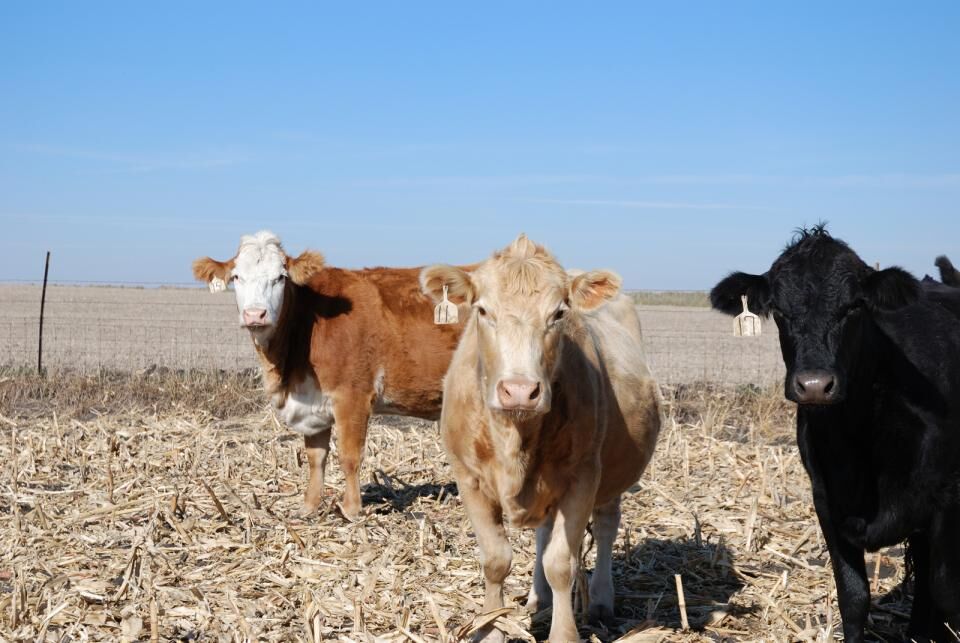Extended drought is challenging livestock producers to carefully manage their fall cornstalks grazing. High nitrate levels may be not only in rainfed (dryland) fields, but also in pivot corners or field edges where plants have been severely moisture stressed.
As row crop harvest begins, wheat and rye forages may be interseeded into potentially higher nitrate cornstalks. If these late-seeded forages receive enough moisture for good fall grazing, can these forages and stalks be co-grazed safely?
Even high nitrate forages can be utilized if the livestock are stepped up on their exposure to consuming higher nitrate feeds.
First, don’t turn cattle into drought-stressed cornstalks when they are hungry. For example, feed lower nitrate forages earlier in the day until the animals become full, then provide access to the higher nitrate cornstalks later in the day.
Second, collect stalk samples from potential high nitrate “hot spot” zones and test for nitrogen levels. If the levels exceed 6,000 ppm nitrate, it may be wise to fence out pivot corners, field edges or zones where the stress is severe.
Generally, cattle prefer grazing corn leaves and husk, which usually are lower in nitrate than the lower one-third of plant stalks. So, resist the temptation to force the livestock to consume higher nitrate stalks after the leaves and husk have been gleaned.
Finally, when possible, creatively step-up cattle on grazing high nitrate feed over seven to 10 days and utilize electric fence. Then, progressively provide increased access to higher nitrate forages while allowing free choice lower nitrate, baled alternative forages. Gradually over time, the rumen microbes can adjust to higher nitrate content. In some cases, nitrate levels that might have caused death with a one-time feeding might be tolerated if introduced into the grazing system over two to three weeks.


